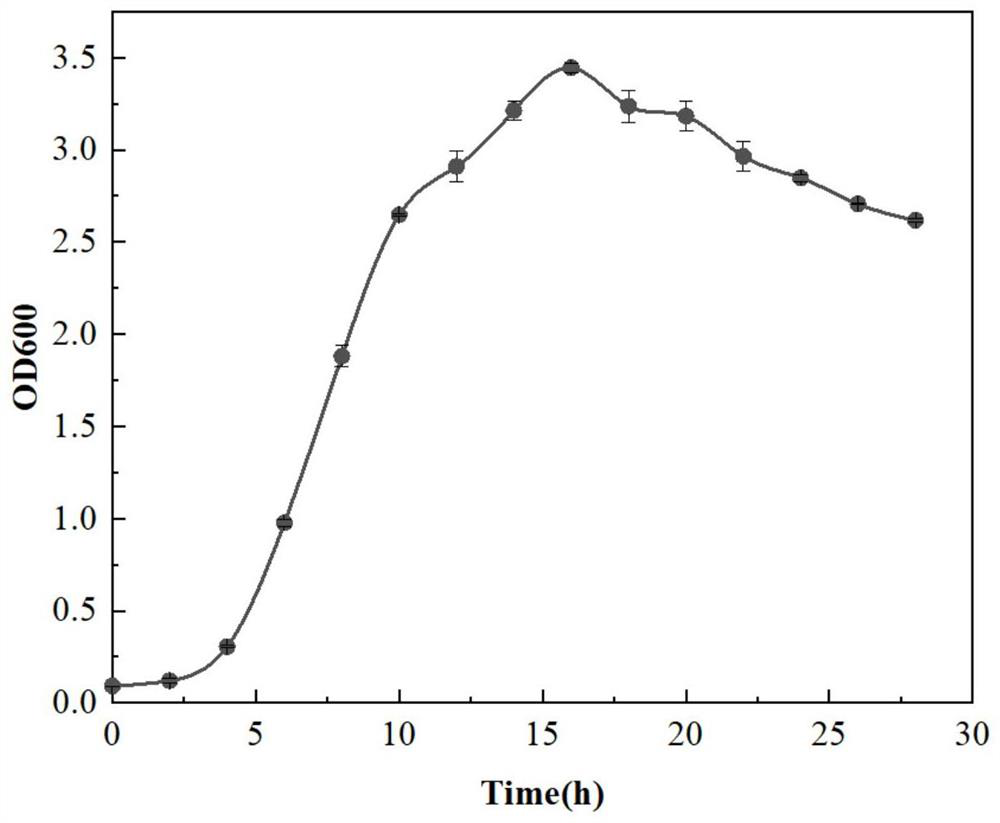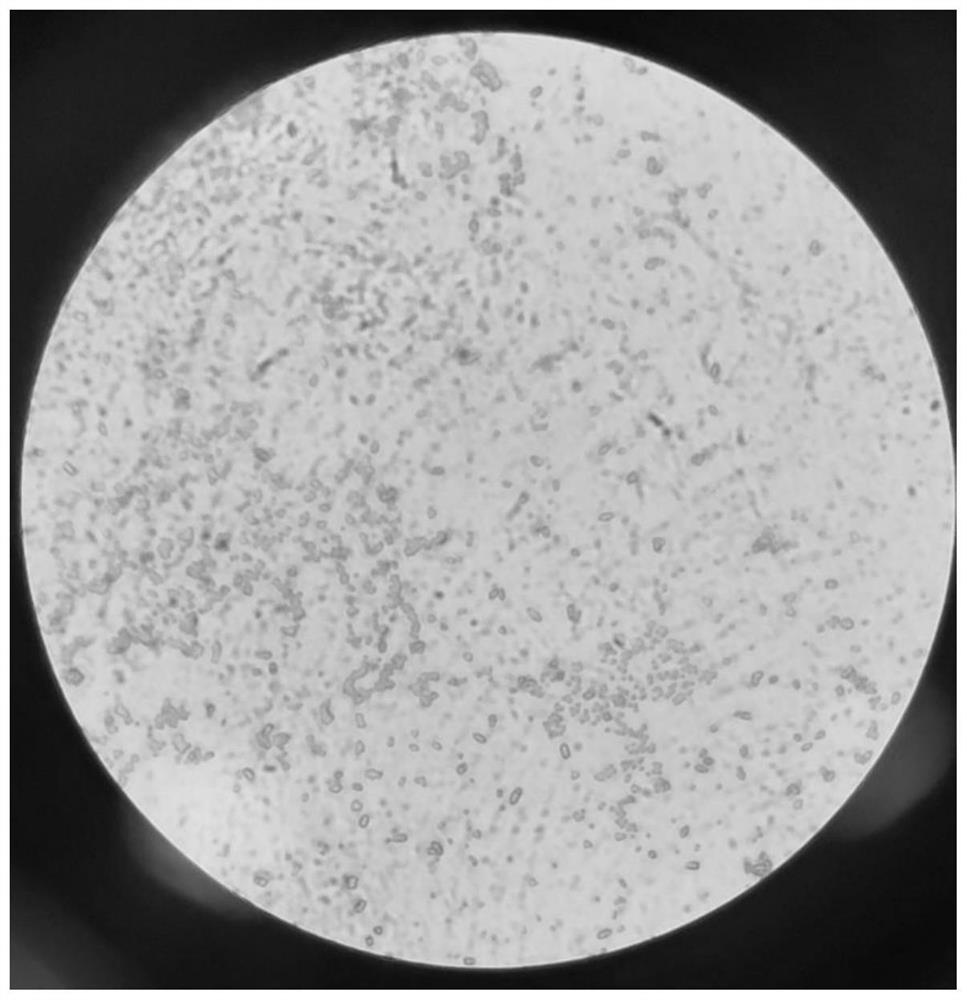Strain for degrading chloramphenicol and synchronously generating electricity and application thereof
A technology of chloramphenicol and bacterial strains, which is applied to circuits, bacteria, electrical components, etc., can solve the problems of strain degradation efficiency and electricity production efficiency game, and achieve the effects of fast growth and reproduction, strong practicability, and high electrical conversion rate
- Summary
- Abstract
- Description
- Claims
- Application Information
AI Technical Summary
Problems solved by technology
Method used
Image
Examples
Embodiment 1
[0035] Example 1 Screening of chloramphenicol-degrading bacterium Raoultella sp. DB-1
[0036] 1. Primary screening of strains
[0037] Start the microbial fuel cell (MFC) with wastewater from a sewage treatment plant as the anode inoculation source. After 100 days of stable operation, take 1 mL of the anode effluent of the MFC and use LB liquid medium for enrichment culture; centrifuge every 48 hours to obtain enriched bacteria Body and replace the culture medium, cycle three cycles.
[0038] Use sterile deionized water to prepare 1 mL of the enriched anode effluent in sequence for 10 -4 、10 -5 、10 -6 Dilute the gradient bacterial suspension, and take 30 μL each and evenly spread it on the LB solid medium. Inverted culture at constant temperature at 30°C for 1-3 days. Select a single colony that grows vigorously and has obvious morphological differences on the plate and repeatedly streaks it to a new LB solid medium to purify the strain. Three parallel control groups are...
Embodiment 2
[0045] The identification of embodiment 2 chloramphenicol degrading bacterial strains
[0046] 1. Morphological observation
[0047] The screened chloramphenicol-degrading bacteria were Gram-negative bacteria ( image 3 ), it is milky white and opaque on the LB plate, with a smooth and moist surface and neat edges ( Figure 4 ). Such as Figure 5 As shown, under the electron microscope, it can be seen that the cells of this strain are in the shape of a regular sphere, and the size of the bacteria is 0.8-1.5 μm, single or in pairs.
[0048] 2. 16S rRNA gene sequencing
[0049] 2.1 Extraction of bacterial genomic DNA
[0050] The strain to be tested was cultured in LB medium to the logarithmic growth phase, and 1.5 mL of the bacterial liquid was collected by centrifugation at 12,000 r / min. The genomic DNA of the strain to be tested was extracted using the Tiangen Bacteria Genomic DNA Extraction Kit.
[0051] 2.2 PCR amplification of 16S rRNA gene sequence
[0052] Using b...
Embodiment 3
[0069] Embodiment 3 degrades chloramphenicol and produces electricity synchronously in biofuel cell
[0070] 1. MFC system construction
[0071] Construct the MFC reactor, the effective volume of the anode chamber and the cathode chamber is 50mL, using graphite carbon felt (3 × 3 × 0.5cm, the effective area is 24cm 2 ) acts as an electrode, and the cathode and anode chambers are separated by a proton exchange membrane. Before use, the cathode and anode graphite carbon felts were soaked in 1 mol / L HCl solution for 24 hours to remove impurities, then washed with ultrapure water until neutral, autoclaved and dried. The cathode and anode titanium wires are connected by an external 1000Ω resistance wire. Before assembly, soak the cathode and anode chambers of the MFC in 95% alcohol for 1 hour, and place the remaining parts of the MFC (aprons, gaskets, screws, nuts, etc.) in an autoclave and sterilize them at 121°C 20min.
[0072] MFC anolyte: NH 4 Cl 0.31g / L, NaH 2 PO 4 2.1...
PUM
 Login to View More
Login to View More Abstract
Description
Claims
Application Information
 Login to View More
Login to View More - R&D
- Intellectual Property
- Life Sciences
- Materials
- Tech Scout
- Unparalleled Data Quality
- Higher Quality Content
- 60% Fewer Hallucinations
Browse by: Latest US Patents, China's latest patents, Technical Efficacy Thesaurus, Application Domain, Technology Topic, Popular Technical Reports.
© 2025 PatSnap. All rights reserved.Legal|Privacy policy|Modern Slavery Act Transparency Statement|Sitemap|About US| Contact US: help@patsnap.com



